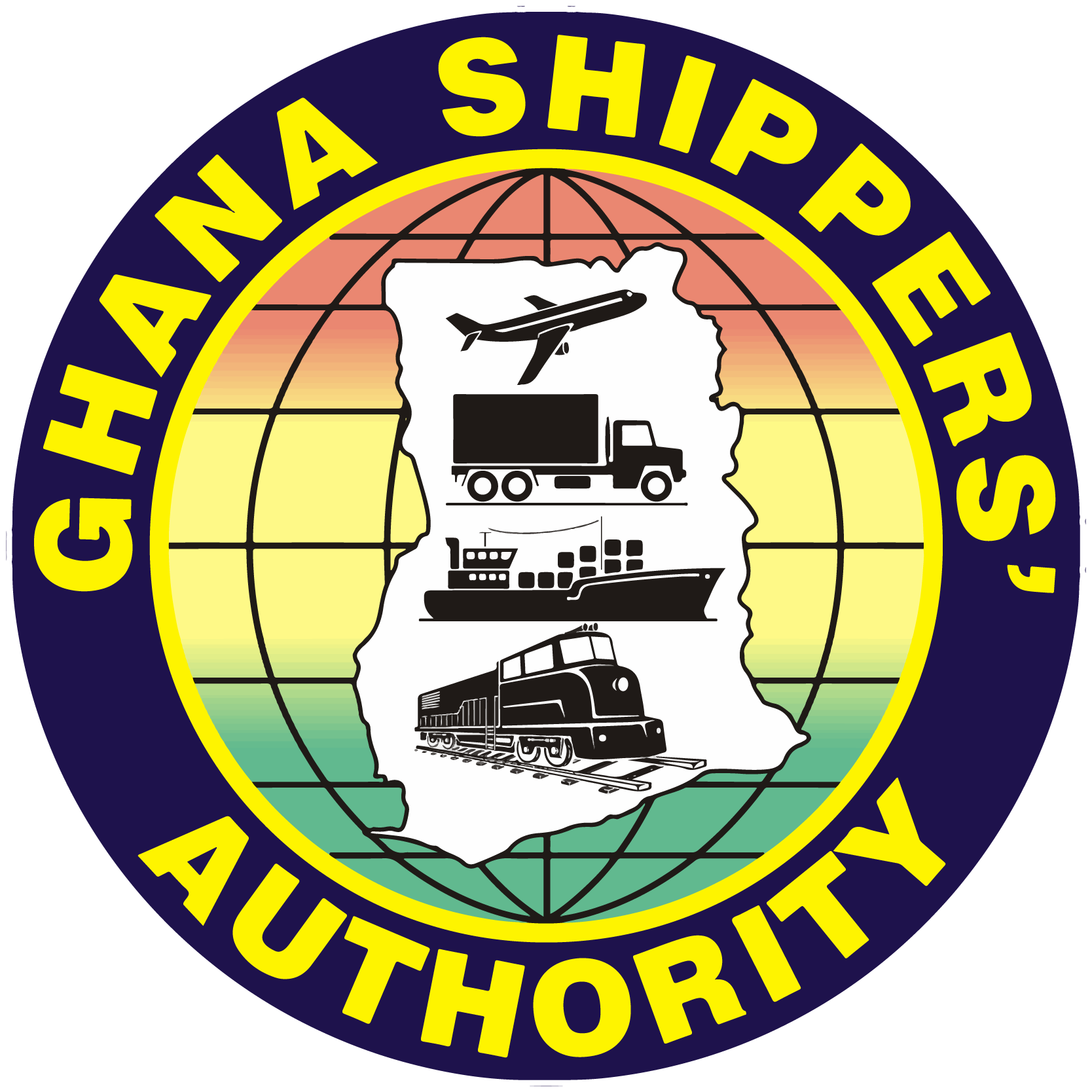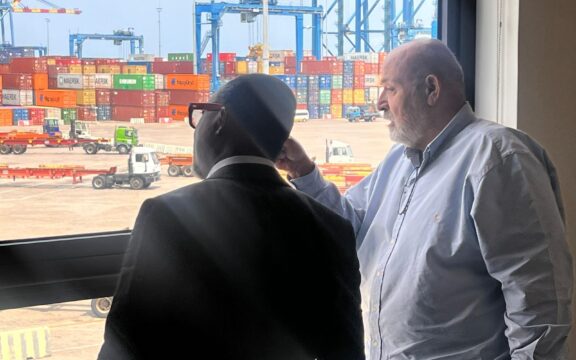
By: Abdul Haki Bashiru-Dine, Ghana Shippers’ Authority
BACKGROUND
The law of the sea is a body of public international laws governing the geographic jurisdictions of coastal States and the rights and duties among States in the use and conservation of the ocean environment and its natural resources.
The law of the sea is commonly associated with an international treaty, the Convention on the Law of the Sea (UNCLOS), negotiated under the auspices of the United Nations, which was signed in 1982 by 117 States and entered into force in 1994. At present 133 States have signed and ratified UNCLOS; Canada, Israel, Turkey, USA, and Venezuela are the most prominent among those that have not ratified.
This treaty both codified customary international law and established new law and institutions for the ocean. UNCLOS is best understood as a framework providing a basic foundation for the international law of the oceans intended to be extended and elaborated upon through more specific international agreements and the evolving customs of States. These extensions have begun to emerge already, making the law of the sea at once broader, more complex, and more detailed than UNCLOS per se.
The law of the sea can be distinguished from two closely related bodies of law: maritime and admiralty. Maritime law is the private law relating to ships and the commercial business of shipping. Admiralty law, often used synonymously with maritime law, applies to the private law of navigation and shipping, in inland waters as well as on the ocean. The latter may also refer more parochially to the legal jurisdiction of specialized Admiralty courts. There may be important overlaps between the public international law of the sea and private maritime law, as may occur through the application of rules for vessel passage through a jurisdiction or the enforcement of domestic law in the ocean.
The search and rescue activities on the seas are a subject of long-standing legal obligations and frameworks which often become muddled and entangled in the intense political debates surrounding the issue. In this article I discuss legal obligations of states related to the search and rescue. From a legal point of view, states can control their borders and refuse migrants to enter under certain conditions. However, states have clear obligations towards refugees and migrants before they cross the border, including assistance at sea. Even if assistance at sea may function as a “pull factor” and encourage refugees and migrants to attempt to cross the high seas such as in the case of the Mediterranean, there is no legal avenue for states to avoid such assistance. Moreover, if assistance is rendered, this entails further obligations towards refugees and migrants.
HIGH SEAS REGIME
All governments manage their territories with laws. This is easy enough to understand with respect to solid ground: when you look at a map, borders usually mark where the authority of one country ends and another’s begins. But what about maritime countries, which either border or are completely surrounded by the sea? Do their laws stop at the shoreline? Would that mean that the seas beyond are lawless?
The high seas are not lawless. Well, not completely. According to international law, a maritime country extends outward some distance from its shoreline. During the 20th century several attempts to develop an international “law of the sea” have been made under the aegis of the United Nations. The results of the third and most-recent United Nations Convention on the Law of the Sea (which took place in Montego Bay, Jamaica, in 1982) were largely successful, with more than 160 countries having signed the agreement by 2017. Several countries, including the United States and others with significant ocean-facing and sea-facing coastlines (such as Colombia, Venezuela, and Turkey) had yet to sign the agreement, however.
Generally speaking, the law of the sea stipulates that maritime countries essentially control their territorial waters from the shore out to a distance of 12 miles (19.3 km), the “12-mile limit.” Within this zone, all laws of that country apply: the country can build, extract natural resources, and either encourage or forbid sea passage through it (or flights over it) just as if it were a parcel of land. Maritime countries are also entitled to an exclusive economic zone (EEZ) made up of the water column and the seabed out to a distance of 200 miles (about 322 km). (The sizes of some EEZs may be limited by the presence of the EEZs of other countries, in which case the overlapping area is often divided equally between the various parties.)
The maritime country that owns the EEZ also owns the sea life and mineral resources found within it, but it cannot prevent ships, aircraft, and other vessels from foreign countries from passing through it and over it.
Nevertheless, there is still a lot of ocean beyond the world’s 12-mile limits and EEZs.
How are legal matters handled in the vast stretches of ocean beyond? In these regions, vessels and aircraft from any country are free to pass through, fly over, fish, and extract mineral resources. With respect to crimes committed in these areas, the laws of the country owning the vessel or structure upon which the crime has been committed hold sway. This may seem pretty straightforward, but vessels in the sea are often on the move, which creates jurisdictional headaches for investigators and government officials. For example, which country’s laws apply when a person from Country X commits a murder aboard a cruise ship owned by Country Y in international waters, but between the time of the crime and its discovery the ship enters the territorial waters of Country Z?
With respect to international crime such as piracy, human trafficking, and crimes against humanity any country or international organization can theoretically claim authority over the matter using the concept of universal jurisdiction. This concept could be used to justify the right of one party or another to thwart the criminal activity as it happens, bring charges against the assailants, and try the assailants in their own national (or international) courts. Since the laws of individual countries and international courts are not recognized by all countries, however, there is often no fully accepted referee. Government officials in one country might choose not to recognize the legal authority of another.
THE DUTY TO RESCUE
There is a duty pursuant to international law for a ship to attempt the rescue of persons at danger at sea. This duty is based on a long-standing and strongly felt moral obligation among seafarers.
This is stated, for example, in the United Nations Convention of the Law of the Sea (UNCLOS) Article 98 the International Convention for the Safety of Life at Sea (SOLAS), Regulation V-33. All states recognize this duty.
One implication of this rule is that a state cannot legally prohibit its vessels from rescuing persons at sea: states must accept that their vessels engage in rescue operations. In the International Convention on Maritime Search and Rescue (SAR), coastal states undertake the role to coordinate the SAR in respect of persons in specified areas (Article 2.3). There is a duty to organize such services (UNCLOS Article 98 and SOLAS, Regulation V-7). There are no provisions in the SAR convention that the particular state in charge of a specific area can direct foreign vessels whether to assist or not. Within the 12 nautical miles of territorial waters, the state has general jurisdiction on other grounds (including the right to direct vessels how to assist or not to assist), but this jurisdiction does not extend to ships in passage assisting other vessels (UNCLOS Articles 17-18).
It is sometimes suggested that migrant vessels heading from Africa to Europe are so unseaworthy, overloaded and in such bad shape, that they are unlikely to make it to the destination. It is thus suggested that the rules of maritime rescue do not apply. I can see no legal basis for this argument. Most likely, the majority of ships in need of a rescue have ended up in this situation because they are unseaworthy, and it would be quite harsh that passengers should pay with their lives for not having ensured the seaworthiness of the vessel. On land, persons in danger are assisted if they have driven too fast, been the passenger of a car driven by a drunk driver, had thoughts of suicide, or caused themselves illness through bad lifestyle choices.
The maritime rules of rescue also apply to stand-by rescuers, and not solely to rescue operations initiated by, for example, freighters coincidentally passing by. As such, even the ships of humanitarian organizations deployed to the Mediterranean with no other purpose than to rescue, can invoke the rules of maritime rescue.
There is a long tradition of such specialized rescuers, and this is clearly reflected in the international law of remuneration for rescue. These rules stipulate that professional salvors should receive extra remuneration to compensate for their preparedness (see for example International Convention on Salvage Article 13). These provisions would be meaningless if the rules did not apply to vessels designated purely to salvage.
In sum, there is a duty and a right to render assistance to persons in danger at sea. This duty applies regardless of whether the rescue operations are believed to have an undesired pull effect, motivating refugees and migrants to travel.
RESCUEES ON BOARD
Rescuers assume primary responsibility for taking care of the rescuees, but there are limits to what they can do. If necessary, the relevant authorities must intervene. At sea, nation states have the duty to actively secure fundamental human rights. This duty was reiterated by The European Court of Human Rights, which stated in Hirsi Jamaa v Italy that the “special nature of the maritime environment cannot justify an area outside the law where individuals are covered by no legal system capable of affording them enjoyment of the rights and guarantees protected by the Convention [the European Convention on Human Rights] which the States have undertaken to secure to everyone within their jurisdiction” (Hirsi Jamaa v. Italy para. 178).
The relevant authority is principally the state with jurisdiction, which has the opportunity to take legal as well as practical actions. This is primarily the state in which the ship with the rescuees is registered, the flag state (UNCLOS, Article 92). Coastal states have such powers pursuant to the rules of the law of the sea over vessels in their internal waters (very near the coast), and (with some exceptions) over those in their territorial waters (typically within 12 nautical miles from their coast). Thus, these states can and must take action and have some responsibility for securing human rights on board.
It may be difficult to find a port that is willing to receive the rescuees. If no such port is found, the responsibility for the rescuees remains for the rescue vessels and the states having jurisdiction over it. It can be tempting in such cases to disembark the rescuees in any willing port. However, international law requires that rescuees should only be disembarked in a safe port (see Martin Ratowich, International Law and Rescue of Refugees by Sea (Stockholm, 2019)). This does not have to be a Western European port, but for example, Libyan ports are not considered safe ports in this respect (see UNHCR and IOM joint statement). Persons who may be political refugees are even better protected (via the principle of “non-refoulement”). If no willing, safe port can be found, the European coastal states and the flag states cannot pass the buck further and must take care of the rescuees.
CONCLUSION
Non-assistance to refugees and migrants at sea is not a legal option. When they are rescued, this entails some obligations for the rescuer and the states having jurisdiction over the rescuer. These obligations prevent disembarkation in an unsafe port and include a responsibility for protecting human rights of the rescuees. This is essential for the protection of migrants.
Unfortunately, even states that generally take human rights seriously often fail to honor these obligations. They ignore their responsibilities to make sure that migrants are rescued and that human rights are respected on board their vessels or visiting vessels. Furthermore, they may allow or even encourage rescuees to be disembarked in a port that is unsafe for them. This is a shameful breach of the best of humanitarian and maritime traditions.
Ghana’s handicraft industry has a huge potential in meeting the ever-growing global market demands. The industrial art and craft sub-sector contributed a total of $30,630,413 (1.08 per cent) of Ghana’s non-traditional exports (NTEs) earnings in 2020. The figure represents an increase of 110.88 per cent from $14,524,610 in 2019 and is attributed to the increasing demand for made-in-Ghana ceramic products and expansion in capacity of production plants.
However, it appears revenue from Ghana’s handicraft industry is in danger of decline as a result of some challenges faced by exporters of handicrafts. Financial constraints are at the top of these challenges. The overwhelming impression from the UNESCO Conference in 2000 was that the crafts organizations and craftsmen generally feel unsupported, under financed, under promoted and undervalued for Ghana to take advantage of the rising global demand for handicrafts, thus increasing its export revenues and making the industry more sustainable, strategies such as offering cheaper loans, encouraging equity investment, encouraging the use of commission agents, and offering business management training needs to be adopted.
These concerns were reiterated by Founder of Winamzua Authentic African Jewellery, Ms. Fulera Seidu. According to her, she has had difficulties in securing loans in the twenty (20) years since she ventured into the business of producing and exporting handicrafts.
“Winamzua” can be interpreted to mean ‘Nature” or “God’s friend” among the people of Kusasi in the Northern part of Ghana where Ms. Fulera Seidu hails. Some of the products She manufactures for export are Basket-ware, ceramic products, beads, necklaces, pottery, leather products, paintings and other forms of art and craft which display the African cultural heritage.
From handicrafts to skin care products
The lack of readily available credit facility to help improve and expand the production of handicrafts for export by Winamzua Authentic African Jewelry, prompted Ms. Seidu to establish “Nzua Natural Body Care Products” as a subsidiary of her handicraft export company, which she says “has been my saviour financially” and her “plan B”. The motivation was to use the proceeds from her skin care business to finance the handicraft production and export business.
Speaking to the Shipping Review Magazine in an interview, Ms. Seidu who is also the Acting President of the Handicraft Exporters Association of Ghana (NAHE) said, “skin care products sell faster and I reinvest proceeds from my skin care sales into my handicraft business because I want to ensure its sustainability”. The flagship skin care product by Nzua Natural Body Care Products is the BLACK SOAP which is produced and exported on pre-order basis.
The Nzua Black Soap which is made from cocoa pod, shea oil, coconut oil and herbal extracts helps to nourish the skin and keep it clean, beautiful while maintaining the colour without bleaching. Only locally sourced and natural raw materials are used in the making of the products.






